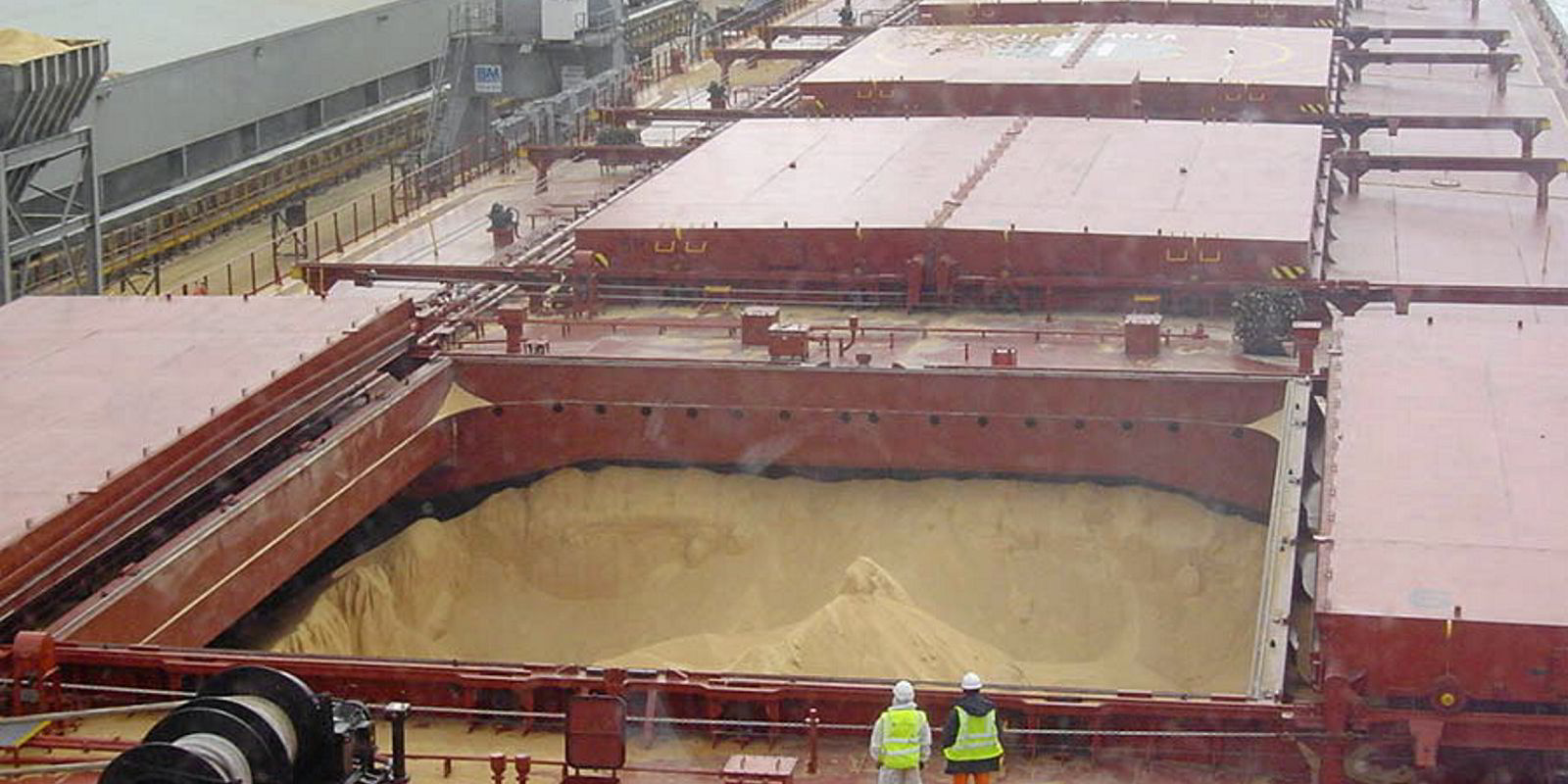Second-quarter earnings season has been the time when public companies revealed buys of middle-aged capesize tonnage.
But there was a catch. The purchases did not come from public bulker owners, but from two leading owners of container ships: Greek tonnage providers Danaos and Costamare.
With this earnings season a pretty lacklustre affair for operators in both dry bulk and boxships — tankers have been more interesting, as reported in detail last week — we thought the trend deserved a closer look in our two-part review of financial reporting.
Just to recap, Danaos confirmed buying five capesizes built between 2010 and 2012 from China Development Bank Financial Leasing in a deal said to be worth $103m, while Costamare acknowledged it had bought a pair of 2011-built capesizes from GoodBulk for some $46m.
Both deals had been previously reported by TradeWinds.
Yet this is not the extent of the move into dry by either owner, as Costamare is building out a large dry bulk trading platform beside 44 owned bulkers, and Danaos has taken a 16.7% stake in New York-listed owner Eagle Bulk Shipping of Connecticut.
Now there are some fundamental governance questions around whether a public container ship owner should be investing in dry bulk vessels at all within the listed company, and we will get to that discussion later.
Case for the buys
But Streetwise spoke with Jefferies lead shipping analyst Omar Nokta about why these owners are going after the middle-aged bulkers, and he sees “compelling” fundamentals in the deals.
“Current newbuildings are priced around $65m and a 10-year-old is valued at $28m. This is a wide disparity, which has been seen before, and was even wider during the difficult 2015-2018 period. But back then the orderbook was large versus today’s, which is at historical lows. Thus a reversion to market balance is expected to be much quicker,” Nokta said.
In a balanced market, hire rates will gravitate toward a level that justifies the newbuilding price, which in turn trickles down to prices for secondhand bulkers.
“At equilibrium, the 10-year-old would reprice to $44m based on straight-line depreciation. That’s over 50% upside on an unlevered basis. When you’re flush with cash, and can afford to make this type of trade, and it won’t overwhelm your financial position, it makes a lot of sense in my view.”
So the case is made for these large bulkers of 12 to 14 years old as a strong asset-play arbitrage.
But if that’s so, why are container ship owners snapping them up rather than some of the public bulker operators such as Golden Ocean Group, Star Bulk Carriers or Genco Shipping & Trading?
Streetwise has heard that environmental, social and governance (ESG) concerns may stand in the way, especially with increased focus on vessel efficiency and emissions levels. In contrast, the acquisitions are but a small, low-profile part of the operations of the big Greek boxship lessors and less of an ESG worry.
One public dry bulk executive tells us, however, that he does not consider vintage and ESG concerns to be the main factor. Rather, while the ships may be a bargain, they are not nearly as cheap as the company’s shares, which are trading at major discounts to net asset value.
According to Jefferies figures, the average of the six dry bulk owners under its coverage is trading at 75% of NAV as investors remain disappointed in the failure of a 2023 market rebound to materialise.
“It’s hard for me to justify laying out money on steel when my own shares are the best bargain out there,” the executive said.
Then there is Nokta’s comment about container ship owners “flush with cash”. Owners like Danaos and Costamare made life-changing money in the peak cycle between late-2020 and mid-2022. Contracted revenues allow them to keep reporting robust results for now, even though the current market is poor and shows few signs of life.
So what to do with all that money? Dry bulk with its comparatively low orderbook looks appealing.
Asked whether he thought uncertainty over prospects for the boxship market influenced such moves, the dry bulk executive laughed.
“Uncertainty? I don’t think there’s any uncertainty. I think they are quite certain where their market is headed,” he said.
The manager did not finish the thought. He didn’t need to.
Other people’s money
But then there is this: the public container ship managements are so excited about dry bulk’s prospects that they are exploring them with your money, dear investor.
And this is where we get back to the old debate about pure-play public owners who jump into other vessel sectors not because any investor has asked them to, but because they decide it is best.
Danaos and Costamare have explored these bets to different degrees.
For John Coustas-led Danaos, the five-capesize purchase has been the extent of its foray into bulker ownership thus far.
But the roughly $75m stake in Eagle Bulk also has come at the expense of the public company without shareholder approval.
Costamare is a whole different matter. It first invested in bulkers two years ago with the purchase of more than 40 secondhand ships and has now added the capesizes.

Further, it has committed to invest $200m in its 56-ship Costamare Bulkers trading platform, notably $200m that is not going into returns to shareholders through a larger dividend, special dividends or stock repurchases.
(The owner does pay a $0.115 quarterly dividend and bought back $50m in shares last quarter out of its market cap of $1.2bn.)
But with diversification have come losses. The trading business lost $24m last quarter and $16m in the first quarter. The owned bulker fleet lost $4m last quarter and $25m the previous quarter. That totals $69m so far this year.
Now things may yet shift the right way for both Danaos’ and Costamare’s dry bulk bets, given the skill and experience of the management teams, especially if the trough in the forlorn container market is prolonged.
And it’s fair to point out that Costamare principal Konstantinos Konstantakopoulos owns 28% of the public company, with Coustas in control of 44.5% of Danaos. These are larger-than-typical insider stakes in a public company and mean principals have more “skin in the game” alongside arm’s-length shareholders.
But such unapproved forays across vessel operating sectors remain a sore point for those who consider investing in shipping, even when there are bargain ships in the offing as Nokta described.
“The typical comment I hear is ‘I thought I was investing in a container ship company, not a maritime hedge fund. If I want to invest in dry bulk, I’ll pick one of the existing pure-play companies’,” one analyst told us.
More ship finance news
Niche shipping lender Pareto Bank is selling new shares in a bid to capture growth opportunities. The Oslo-listed bank said the contemplated private placement will raise up to NOK 350m ($33m). Click here to read.
Hapag-Lloyd is reportedly among four bidders to have submitted offers for South Korea’s largest liner company HMM. Local news agencies report that the German owner and three local companies — LX Group, Harim Holdings and Dongwon Holdings Group — are in the hunt. Click here to read.
The new owner of New York-based investment bank the Maxim Group — which has been controversial for its deal-making practices in shipping — is now fending off explosive allegations over its own activities. Click here to read.





